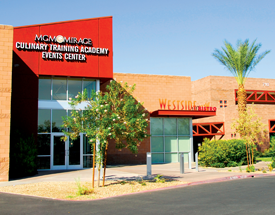A significant step in that quest was two California CDFIs being issued Standard and Poor’s (S&P) ratings in April 2015. Two other important moves to raise capital are seven CDFI intermediaries raising $525 million through the CDFI Fund’s CDFI Bond Guarantee Program (BGP) and 35 nondepository CDFIs becoming members of the Federal Home Loan Bank (FHLB) system. This article explores each of these developments.
Two CDFIs Obtain Standard & Poor’s Ratings
Clearinghouse CDFI, a 19-year-old for-profit CDFI1 that has made $1.1 billion in loans, and Housing Trust Silicon Valley, a 15-year-old CDFI that has invested $94 million in affordable housing financing, received AA and AA− ratings, respectively, from the S&P Ratings Services’ U.S. Public Finance Housing Enterprise Group.2 Since these ratings were issued, S&P and the two CDFIs have received numerous inquiries from other CDFIs interested in receiving ratings.

Housing Trust Silicon Valley provided a $125,000 predevelopment loan to Charities Housing, a nonprofit, for San Antonio Place, a development designed for residents who are steadily employed but who do not earn enough income to afford the high market rents in Silicon Valley. Of the 120 units, 70 percent are rented to very low-income residents, and the remaining units are rented to extremely low-income residents.
Doug Bystry, president and chief executive officer of Clearinghouse CDFI, said that the CDFI’s primary motivation in seeking the rating was to attract investments from insurance companies in California. He said that senior executives in the insurance companies had told him that a rating from Moody’s, S&P’s, or a comparable source would be necessary for them to consider investing in a CDFI. He said that, to his knowledge, California insurance companies are encouraged by the state to make community development investments; however, they have made very few CDFI investments.3
Bystry said that the process of obtaining the S&P rating took eight months and was very detailed; the CDFI’s policies, procedures, and practices and every loan in the organization’s portfolio were carefully reviewed. While the S&P rating has the potential to be transformative in raising capital, not every CDFI may receive a high rating because of what Bystry described as S&P’s objective and stringent evaluation.

Clearinghouse CDFI provided a $1 million loan and grant financing package to the Culinary Training Academy (CTA) in Las Vegas, NV, for working capital to support an expansion of services. CTA is a nonprofit that provides vocational training to help entry-level workers obtain good-quality jobs. CTA will hire 200 additional employees as a result of this business expansion.
Jim Mather, chief lending officer at Housing Trust Silicon Valley in San Jose, CA, said that the S&P ratings “expand the range of potential investors.” He also said that the traditional capital-raising strategy in which banks provide loans to the CDFI and the CDFI, in turn, makes loans, supplemented by some capital from foundations and the CDFI Fund, has its limitations.
Mather said that Housing Trust is particularly interested in obtaining investments from insurance companies. He thought that the CDFI and insurance companies would get to know each other during the next year or so and that such investments were not likely to occur rapidly. In addition, the CDFI wants to attract investments from high-tech companies in Silicon Valley. Corporate treasurers look for an S&P or comparable rating, he noted.
Housing Trust is also developing plans for a single-family taxable mortgage revenue bond issue with a first tranche of $7 million that would fund 400 down payment second mortgage loans. The S&P rating will enable the CDFI to secure a “better interest rate and more potential investors,” stated Mather. The rating also “makes it easier to start a conversation” with banks on Community Reinvestment Act–related investments and makes organizations “stand out.” According to Mather, the rating took a little less than six months to complete and involved a very thorough multiyear audit. S&P and the two CDFIs declined to disclose the cost of the ratings.
S&P began analyzing the CDFI industry using its criteria for state housing finance agencies, according to S&P’s Credit FAQ.4 Mikiyon W. Alexander, senior director and analytical manager with S&P’s U.S. Public Finance Ratings, explained that S&P had previously rated the Pennsylvania Housing Finance Agency, the New Jersey Housing and Mortgage Finance Agency, the Philadelphia Housing Authority, and the Newark Housing Authority.
In assessing a CDFI credit rating, S&P evaluates earnings quality, financial strength, and capital adequacy; asset quality; debt levels and types; and overall strategy and management, according to the FAQ. S&P said that “understanding a CDFI’s overall impact enhances our perspective of a CDFI’s strategy and management.”
Alexander said that S&P takes into account the CDFIs’ social mission when evaluating and rating CDFIs and noted that CDFIs are rated within S&P’s Public Finance Department and not in its Corporate Finance Departments. He explained that “because of the social and mission-driven nature of CDFIs, the metrics and comparisons of financial performance are very similar to our other outstanding social lending– or social mission–based municipal or nonprofit organizations. We are not expecting financial ratios similar to what you would expect for financial institutions. … The portfolios are different in nature.”
Alexander said that CDFIs may want to obtain an S&P rating to better position themselves with investors and potentially to enter the capital markets to help support their mission. The FAQ notes that “although we do not expect CDFIs to issue public-market debt to support their missions, the rating does allow such forms of financing to be a viable option.”
CDFIs Raise Money Through the CDFI Bond Guarantee Program
The Small Business Jobs Act of 2010 authorizes the U.S. Department of the Treasury to guarantee the full amount of bonds or notes issued to support CDFI loans and investments by providing CDFIs with long-term capital.5
Bonds totaling $525 million have been issued since 2013 by qualified issuers that assemble and submit BGP applications and issue bonds on behalf of CDFIs.
In BGP activity to date:
- the Opportunity Finance Network issued a $100 million bond in 2014 on behalf of Clearinghouse CDFI in California;
- the Community Reinvestment Fund, Inc., Minneapolis, MN, issued two bonds in 2014, one for $125 million on behalf of The Community Development Trust, LP, and one for $200 million for Capital Impact Partners, IFF, Low Income Investment Fund, and The Reinvestment Fund; and
- a Bank of America subsidiary, TriSail Funding Corporation, issued a $100 million bond in 2014 on behalf of Enterprise Community Loan Fund, Inc., and Local Initiatives Support Corporation.
CDFIs Seek Federal Home Loan Bank Membership
Under the Housing and Economic Recovery Act of 2008, nondepository CDFIs became eligible for membership in the FHLB system, which consists of 12 regional FHLBs. Members receive loans, known as advances, from the FHLB in their region at favorable rates.
Thirty-seven nondepository CDFIs had become FHLB members as of June 30, 2015, according to the Federal Housing Finance Agency. Twelve nondepository CDFIs joined the FHLBs in 2014,6 and five more joined in the first quarter of 2015. The Reinvestment Fund, based in Philadelphia, joined in 2014. Clearinghouse CDFI, as mentioned earlier, is a member of the Federal Home Loan Bank of San Francisco.
In 2015, the Community First Fund, a CDFI based in Lancaster, PA, became a member of the Federal Home Loan Bank of Pittsburgh (FHLBP). Joan M. Brodhead, executive vice president and chief operating officer of Community First, said that FHLBP membership is an alternative financing source that provides ready access to capital. Community First envisions that FHLBP’s Banking on Business program will be a credit enhancement that will enable some small business borrowers to be approved for credit, she said. The CDFI, which also plans to explore the possible use of FHLBP’s affordable housing programs, had discussed FHLBP membership for several years. After FHLBP revised some borrowing and collateral requirements, the CDFI applied for membership and was approved in several months.
A U.S. Government Accountability Office report7 said that FHLB collateral requirements can discourage nondepository CDFIs from seeking FHLB membership and from obtaining advances. According to the report, “The FHLBanks generally impose collateral requirements on nondepository CDFIs that are comparable to those imposed on depository members categorized as higher risk and in some cases, comparable to those imposed on insurance companies.” Some FHLBs have revised these requirements.
For more information, contact Doug Bystry at dbystry@clearinghousecdfi.com, Jim Mather at jim@housingtrustsv.org, Mikiyon W. Alexander at mikiyon.alexander@standardandpoors.com, or Joan M. Brodhead at jbrodhead@commfirstfund.org.
The views expressed here do not necessarily represent the views of the Federal Reserve Bank of Philadelphia or the Federal Reserve System.
[1]Clearinghouse CDFI is one of a handful of for-profit CDFIs.
[2]According to S&P, an obligor rated AA has very strong capacity to meet its financial commitments. The highest issuer credit rating assigned by S&P is AAA.
[3]Insurance companies in California that write California premiums of $100 million or more annually have been required since 2011 to develop policy statements containing their goals for community development investments. For details, see http://ow.ly/RsAAt.
[4]See https://www.spglobal.com/ratings/en/sector/u-s-public-finance/housing.
[5]For program details, see http://ow.ly/Sz7dB.
[6]See U.S. Government Accountability Office report on CDFI membership in Federal Home Loan Banks. The report, which states that the number of nondepository CDFIs that have become FHLB members has increased each year since the first one joined in 2010, is available at http://www.gao.gov/assets/670/669831.pdf.
[7]See the U.S. Government Accountability Office report.

